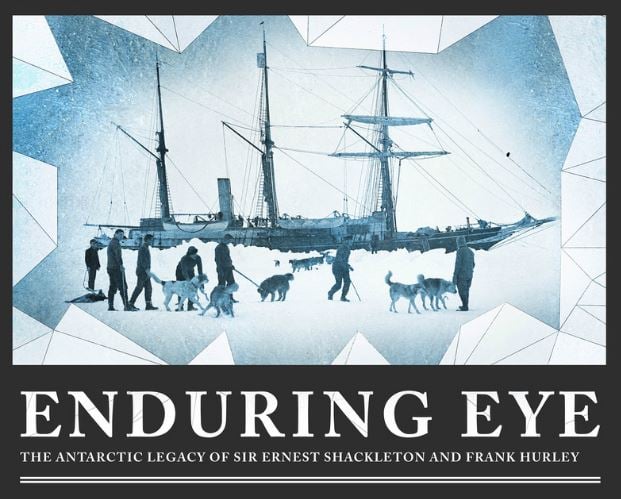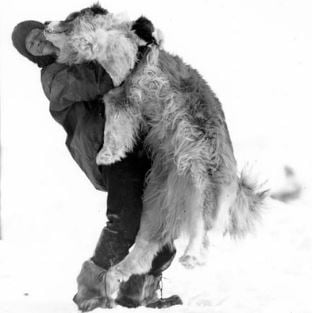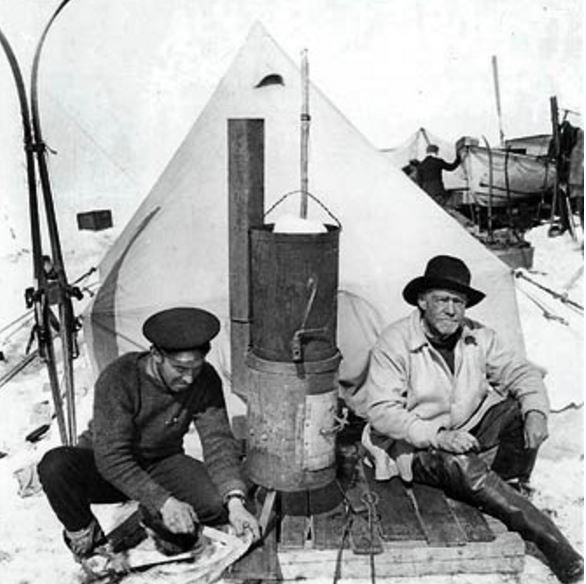Previously unseen newly digitised images of Sir Ernest Shackleton’s and colleagues’ Endurance Expedition of 1914-1917 are on display at an exhibition – Enduring Eye – hosted by the Royal Geographical Society, which opened on 21st November, 2015.
The Endurance expedition, also known as the Imperial Trans-Antarctic Expedition, was an attempt to make the first land crossing of the Antarctic continent. It was the last major expedition of the Heroic Age of Antarctic Exploration.
After Roald Amundsen’s conquest of the South Pole in 1911, crossing the Antarctic continent from sea to sea remained, according to Shackleton “one great main objective in Antarctic journeyings.” Although the expedition failed, it is seen today as one of history’s greatest feats of endurance.
 The exhibition ‘Enduring Eye’ marks the 100th anniversary of Shackleton’s gruelling expedition. (Image: Royal Geographical Society)
The exhibition ‘Enduring Eye’ marks the 100th anniversary of Shackleton’s gruelling expedition. (Image: Royal Geographical Society)
Today’s exhibition opened exactly 100 years to the day that the crushed Endurance sank in the Weddell Sea beneath the sea ice. Members of the public are invited to come and visit until 28th February, 2016.
The exhibition contains over 90 high-resolution images taken by Frank Hurley, Shackleton’s official expedition photographer. Hurley managed to save the pictures under the most extreme circumstance – they provide us with evidence of what the men of the Endurance had to go through.
The fragile glass plate and celluloid negatives, which the Royal Geographical Society, along with IBG (Institute of British Geographers), stored securely for over 80 years, have for the first time been digitised directly from the originals.
The images, which can now be viewed at full definition, unlock the amazing detail captured originally by Hurley in his photographic processing, including images of the interior of Endurance and high-resolution data of life on the Weddell Sea’s pack ice.
James Francis ‘Frank’ Hurley, OBE (1885-1962), born in Sydney, Australia, was one of the first truly modern documentary photographers. He aimed to have his images seen in the largest scale possible.
 Some of Frank Hurley images show the relationship between the expedition members and their dogs that cannot be expressed in words. (Image: Royal Geographical Society)
Some of Frank Hurley images show the relationship between the expedition members and their dogs that cannot be expressed in words. (Image: Royal Geographical Society)
Hurley’s intention honoured
Today, 100 years later, Hurley’s intention has been honoured with giant-dimension prints – some of them more than 2 metres in width and height – at the heart of the exhibition. The Royal Geographical society says the images provide the viewer with a sense of wonder and awe.
The exhibition also includes several ‘precious survivors’ – personal items that were carried through every stage of the consecutive journeys for survival from the Weddell Sea to Elephant Island and onto South Georgia.
These include such artefacts as the Bible from the Society’s collections, which Queen Alexandra originally presented to Shackleton when she visited the Endurance on 16th July, 1914. The Bible was inscribed by her.
 Frank Hurley (left) and Ernest Shackleton at Ocean Camp. (Image: Wikipedia)
Frank Hurley (left) and Ernest Shackleton at Ocean Camp. (Image: Wikipedia)
Meredith Hooper, the Antarctic historian, broadcaster and writer, researched, wrote and curated the exhibition. She gathered source material in the UK, New Zealand and Australia, and also drew on information provided by the descendants of some of the 28 men on the expedition.
Special thanks
The exhibition is supported by UKAHT (UK Antarctic Heritage Trust), with the Governments of South Georgia, South Sandwich Island and the British Antarctic Territory, as well as the Royal Commission for the Exhibition of 1851.
The Royal Geographical Society wrote on its website:
“The Society acknowledges the generosity of the UKAHT as lead supporter of the curation and creation of the exhibition and in contributing specialist knowledge and expertise to the exhibition as part of its role in the protection, conservation and promotion of the public understanding of the United Kingdom’s Antarctic heritage. We also thank Rolex for its support of the Society’s Picture Library and contribution toward conservation of its collections.”
Enduring Eye – about the exhibition
Adddress: 1 Kensington Gore, London, SW7 2AR (in Kensington at the junction of Exhibition Road and Kensington Gore).
Duration: Saturday 21 November 2015 – Sunday 28 February 2016.
Visiting Hours: Monday – Friday: 10.00am – 5.00pm. Saturday and Sunday: 10.00am – 4.00pm. Closed: 24 December 2015 to 4 January 2016 inclusive.
Free exhibition.
Video – Documentary on the Endurance

